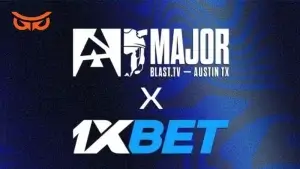The path to victory in League of Legends lies through the turrets and inhibitors. But if you ever find yourself having a hard time breaking through the enemy defenses, you can turn to jungle objectives to make the task more manageable.
Red and Blue Buffs
The Red Brambleback and the Blue Sentinel are neutral monsters that spawn 1 minute and 40 seconds into the game and are widely referred to as red and blue. Both teams have one of these in their jungle, although nothing is stopping them from invading the enemy territory and stealing away the monsters from their opponents. As to what makes them so valuable, the answer is simple—buffs.
The Red Bramblemack grants the Crest of Cinders (or red buff) to its killer. Red buff increases the power of your basic attacks, making them slow the target’s movement speed and deal bonus damage over time. It also gives a large amount of health regeneration out of combat. You can identify the Crest of Cinders by the glowing red circle around the champion.
The Blue Sentinel grants the Crest of Insight (blue buff). Blue buff gives rapid mana (or energy) regeneration and cooldown reduction, making it extremely useful for mages and spell casters. You can point out the Crest of Insight by the swirling blue circle surrounding the champion.
Both buffs last only two minutes, so time is of the essence when using them. Usually, the first buffs are taken by the jungler to help him deal with monsters and set up ganks. As the game goes on, red buff is traditionally given over to the AD carry and blue buff—to the mid laner. Also, keep in mind that dying while holding these buffs will transfer them to your killer with their duration renewed.
Securing buffs and taking them away from your opponents is a big part of LoL’s gameplay, and having your red and blue on the correct champions can be the deciding factor in teamfights and skirmishes.
Elemental Drakes
Elemental Drakes are another pivotal objective in League of Legends. Unlike red and blue, Drakes give permanent buffs to their slayers. There are currently four types of Elemental Drakes that grant their own unique buffs:
- Cloud Drake. Grants a movement speed buff that works out of combat.
- Infernal Drake. Provides additional attack damage and ability power.
- Mountain Drake. Boosts your damage to turrets and monsters.
- Ocean Drake. Gives you increased health and mana regeneration when you’re not attacked by champions or turrets.
The first Elemental Drake appears two and a half minutes into the game on the bottom side of the map. Once a team kills it, another one spawns in its place six minutes later, and so on. The Drake types are decided at random, although teams do get a visual indicator of what Drake is going to spawn next. Also, slaying multiple Drakes of the same element gives you an improved version of their buff. Finally, even though there are four Elemental Drakes in the game, only three of them can appear in any single match, and you can only ever see three Drakes of the same type.
Players tend to put a lot of value on Infernal Drakes because they provide raw combat stats. Mountain Drakes are also quite popular since they give you more control over other objectives. The least desired Drakes are Ocean and Cloud due to their bonuses only being effective out of combat. Still, every drake brings something to the table that teams can use to gain an edge over their opponents.
Elder Dragon
As the game goes past the 35-minute mark, Elemental Drakes stop spawning and are replaced with an Elder Dragon. An Elder Dragon is much stronger compared to its elemental counterparts and respawns every 10 minutes. Taking it down increases the potency of the Elemental buffs you’ve acquired while also adding bonus true damage to your basic attacks and abilities. Unlike the buffs from the Elemental Dragons, this effect only lasts a few minutes. However, it’s so powerful that a team with an Elder Dragon buff will almost always have the upper hand in the upcoming teamfights.
Rift Herald
Rift Herald is a neutral monster that spawns at the 10-minute mark on the top side of the map. It is a mighty monster that’s vulnerable to attacks from behind, so it’s better to engage him as a duo or even a trio. Killing a Rift Herald gives you an Empowered Recall—the ability to return to your base faster—and a trinket that can summon the copy of the Herald at the desired location. Once a Rift Herald is summoned, it will slowly make its way towards the enemy base and siege their turrets. Kind of like a mini-boss that’s fighting on your side. Do keep in mind, though, that the trinket can expire if you don’t use it within 4 minutes.
Baron Nashor
Once the game goes over 20 minutes, Rift Herald’s place is taken by Baron Nashor. Baron Nashor is the most powerful monster in the game that often requires a combined effort of the entire team to defeat it. Killing the Baron gives every living member of your team a temporary Hand of Baron buff that grants attack damage, ability power, and Empowered Recalls. In addition, minions around the buffed champion get powered up and become much faster and more durable, which is crucial to sieging turrets and breaking into the enemy base. Baron Nashor is the primary point of contention in the most games, and teams constantly fight over him.
Conclusion
None of the jungle objectives are vital to winning the game and—in fact—most of them can be skipped altogether. But if you ever find yourself stuck, unable to make that one final push, Dragon, Rift Herald, Baron Nashor, or even a red buff can become the tipping point of the match. And in pro play, where teams are often closely matched, knowing how to control these objectives can be the difference between victory and defeat.
Want to know more about turrets, inhibitors, and Nexus? Check out our other guide on the main objectives of League of Legends!























